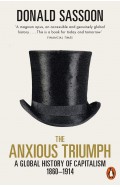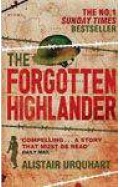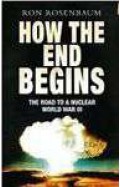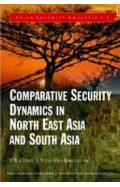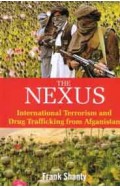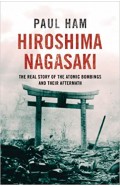- Home
- Business & Management
- Banking
- History
- Military
- The Vanquished: Why the First World War Failed to End, 1917-1923
The Vanquished: Why the First World War Failed to End, 1917-1923
By: Robert Gerwarth
-
Rs 1,036.75
- Rs 1,595.00
- 35%
You save Rs 558.25.
Due to constant currency fluctuation, prices are subject to change with or without notice.
'This narrative of continent-wide chaos makes it easier to understand why order came to seem a supremely desirable objective in 1930s Europe, trumping freedom' Max Hastings, The Sunday Times
'Important and timely... obliges us to reconsider a period and a battlefront that has too often been neglected by historians.' Margaret MacMillan, New York Times Review of Books
'Lucid, incisive and packed with fascinating details' Financial Times
'This war is not the end but the beginning of violence. It is the forge in which the world will be hammered into new borders and new communities. New molds want to be filled with blood, and power will be wielded with a hard fist.' Ernst Jünger (1918)
For the Western allies 11 November 1918 has always been a solemn date - the end of fighting which had destroyed a generation, and also a vindication of a terrible sacrifice with the total collapse of their principal enemies: the German Empire, Austria-Hungary and the Ottoman Empire. But for much of the rest of Europe this was a day with no meaning, as a continuing, nightmarish series of conflicts engulfed country after country.
In this highly original, gripping book Robert Gerwarth asks us to think again about the true legacy of the First World War. In large part it was not the fighting on the Western front which proved so ruinous to Europe's future, but the devastating aftermath, as countries on both sides of the original conflict were wrecked by revolution, pogroms, mass expulsions and further major military clashes. If the War itself had in most places been a struggle purely between state-backed soldiers, these new conflicts were mainly about civilians and paramilitaries, and millions of people died across central, eastern, and south-eastern Europe before the USSR and a series of rickety and exhausted small new states came into being.
Everywhere there were vengeful people, their lives racked by a murderous sense of injustice, and looking for the opportunity to take retribution against enemies real and imaginary. Only a decade later, the rise of the Third Reich and other totalitarian states provided them with the opportunity they had been looking for.
'This narrative of continent-wide chaos makes it easier to understand why order came to seem a supremely desirable objective in 1930s Europe, trumping freedom' Max Hastings, The Sunday Times
'Important and timely... obliges us to reconsider a period and a battlefront that has too often been neglected by historians.' Margaret MacMillan, New York Times Review of Books
'Lucid, incisive and packed with fascinating details' Financial Times
'This war is not the end but the beginning of violence. It is the forge in which the world will be hammered into new borders and new communities. New molds want to be filled with blood, and power will be wielded with a hard fist.' Ernst Jünger (1918)
For the Western allies 11 November 1918 has always been a solemn date - the end of fighting which had destroyed a generation, and also a vindication of a terrible sacrifice with the total collapse of their principal enemies: the German Empire, Austria-Hungary and the Ottoman Empire. But for much of the rest of Europe this was a day with no meaning, as a continuing, nightmarish series of conflicts engulfed country after country.
In this highly original, gripping book Robert Gerwarth asks us to think again about the true legacy of the First World War. In large part it was not the fighting on the Western front which proved so ruinous to Europe's future, but the devastating aftermath, as countries on both sides of the original conflict were wrecked by revolution, pogroms, mass expulsions and further major military clashes. If the War itself had in most places been a struggle purely between state-backed soldiers, these new conflicts were mainly about civilians and paramilitaries, and millions of people died across central, eastern, and south-eastern Europe before the USSR and a series of rickety and exhausted small new states came into being.
Everywhere there were vengeful people, their lives racked by a murderous sense of injustice, and looking for the opportunity to take retribution against enemies real and imaginary. Only a decade later, the rise of the Third Reich and other totalitarian states provided them with the opportunity they had been looking for.
The Vanquished: Why the First World War Failed to End, 1917-1923
By: Robert Gerwarth
Rs 1,036.75 Rs 1,595.00 Ex Tax :Rs 1,036.75
Zubin Mehta: A Musical Journey (An Authorized Biography)
By: VOID - Bakhtiar K. Dadabhoy
Rs 472.50 Rs 1,050.00 Ex Tax :Rs 472.50
The Anxious Triumph - A Global History of Capitalism, 1860-1914
By: Donald Sassoon
Rs 1,426.75 Rs 2,195.00 Ex Tax :Rs 1,426.75
How The End Begins: The Road to a Nuclear World War III
By: Ron Rosenbaum
Rs 1,080.00 Rs 1,350.00 Ex Tax :Rs 1,080.00
Comparative Security Dynamics in North East Asia and South Asia English Spanish French Italian German Japanese Chinese Hindi and Korean Edition
By: N/A
Rs 562.50 Rs 1,250.00 Ex Tax :Rs 562.50
The Nexus: International Terrorism and Drug Trafficking from Afganistan
By: N/A
Rs 942.75 Rs 2,095.00 Ex Tax :Rs 942.75
Trading Secrets: Spies and Intelligence in an Age of Terror
By: Mark Huband
Rs 1,282.50 Rs 2,850.00 Ex Tax :Rs 1,282.50
Hunting Che: How A US Special Forces Team Helped Capture the Worlds Most Famous Revolutionary
By: Mitch Weiss
Rs 1,032.75 Rs 2,295.00 Ex Tax :Rs 1,032.75
Soldier Sahibs The Men Who Made the NorthWest Frontier
By: Charles Allen
Rs 1,686.75 Rs 2,595.00 Ex Tax :Rs 1,686.75
Civilian Warriors The Inside Story of Blackwater and the Unsung Heroes of the War on Terror
By: Erik Prince
Rs 1,166.75 Rs 1,795.00 Ex Tax :Rs 1,166.75
The Anxious Triumph - A Global History of Capitalism, 1860-1914
By: Donald Sassoon
Rs 1,426.75 Rs 2,195.00 Ex Tax :Rs 1,426.75
No recently viewed books available at the moment.
Zubin Mehta: A Musical Journey (An Authorized Biography)
By: VOID - Bakhtiar K. Dadabhoy
Rs 472.50 Rs 1,050.00 Ex Tax :Rs 472.50
The Vanquished: Why the First World War Failed to End, 1917-1923
By: Robert Gerwarth
Rs 1,036.75 Rs 1,595.00 Ex Tax :Rs 1,036.75
The Anxious Triumph - A Global History of Capitalism, 1860-1914
By: Donald Sassoon
Rs 1,426.75 Rs 2,195.00 Ex Tax :Rs 1,426.75











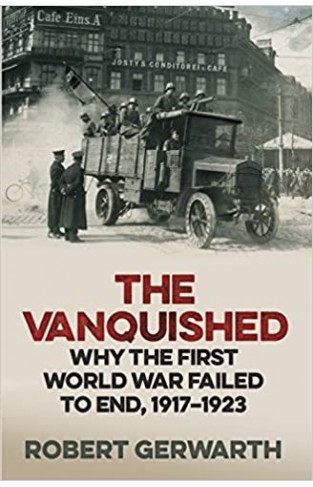
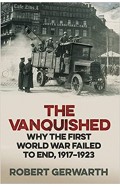
-120x187.jpg?q6)





